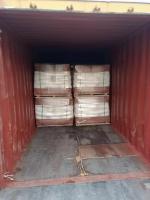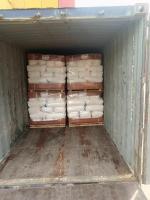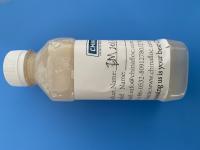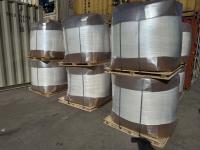Our Products
Polyacrylamide / cationic flocculant zetag 9214-DE can be replaced by Chinafloc C1012

Application of Cationic Flocculant ZETAG 9214-DE
Introduction
ZETAG 9214-DE is a high-performance cationic polyacrylamide emulsion flocculant developed by BASF (now part of the Solenis water technologies portfolio). Like other members of the ZETAG® family, it is designed to facilitate solid–liquid separation in wastewater treatment, sludge handling, and industrial effluent management. Its cationic charge allows it to effectively neutralize negatively charged particles, such as organic colloids, biosolids, and certain mineral fines, making it especially effective in municipal and industrial sludge dewatering processes.
The main application of ZETAG 9214-DE lies in sludge dewatering for municipal wastewater treatment plants, but it also plays a significant role in industrial effluent treatment, food processing, papermaking, mining applications, and environmental water clarification.
1. Municipal Wastewater Treatment
The single most important application of ZETAG 9214-DE is in municipal wastewater treatment, where it is used to condition sludge prior to mechanical dewatering.
-
Sludge Conditioning: Wastewater treatment plants generate large volumes of sludge from primary settling, biological treatment, and tertiary processes. This sludge is highly hydrated and has poor dewatering characteristics. By adding ZETAG 9214-DE, the negative charges on the sludge particles are neutralized, causing the particles to agglomerate into larger, denser flocs.
-
Improved Dewatering Equipment Performance:
-
Centrifuges: Flocculation improves solids capture, produces a clearer centrate, and increases cake dryness.
-
Belt Filter Presses: Enhances drainage, leading to higher throughput and reduced polymer consumption.
-
Screw Presses and Plate and Frame Presses: Promotes efficient water release, reduces cycle times, and produces drier sludge cakes.
-
-
Economic Benefits: By reducing sludge moisture, ZETAG 9214-DE lowers transportation and disposal costs, which are among the largest expenses in wastewater treatment operations.
2. Industrial Wastewater Treatment
ZETAG 9214-DE is also applied in industrial wastewater systems, particularly where effluents contain large amounts of organic matter, suspended solids, or colloids.
-
Food and Beverage Industry: Effluents from meat processing, dairies, breweries, and sugar production contain proteins, fats, and organic solids. ZETAG 9214-DE helps clarify water and condition sludge for easier dewatering.
-
Textile and Dyeing: Cationic flocculants remove color bodies and fine suspended matter, improving compliance with discharge standards.
-
Chemical and Petrochemical Plants: Neutralizes organic colloids, enhances effluent clarification, and reduces chemical oxygen demand (COD).
-
Steel and Metal Finishing: Improves separation of oily solids, emulsions, and fine suspended matter.
In each case, ZETAG 9214-DE ensures better water quality for discharge or reuse and reduces downstream treatment costs.
3. Mining and Mineral Processing
Although anionic flocculants are more common in mining, ZETAG 9214-DE is used where negatively charged slurries or organics dominate.
-
Coal Washing Plants: Enhances thickening of coal slurries and improves water recycling.
-
Clay-rich Tailings: Effective in flocculating ultrafine negatively charged clays, reducing turbidity and improving tailings storage stability.
-
Specialized Ore Processing: In cases where mineral slurries exhibit strong negative charges, cationic flocculants can be more effective than anionic types.
4. Papermaking Industry
The papermaking process generates significant wastewater streams and fibrous sludge. ZETAG 9214-DE finds applications in:
-
Sludge Handling: Conditions fibrous sludge prior to dewatering, reducing disposal costs.
-
Retention and Drainage Aids: Improves retention of fines and fillers within the paper sheet and accelerates drainage on the wire section.
-
Effluent Treatment: Clarifies wastewater streams, enabling water recycling and lowering the environmental footprint of papermills.
5. Environmental and Surface Water Clarification
ZETAG 9214-DE can also be applied in environmental remediation projects:
-
Surface Water Clarification: Used in reservoirs, lakes, or rivers to settle organic matter and suspended solids, improving water clarity.
-
Stormwater Treatment: Clarifies runoff from industrial or municipal sites by flocculating fine sediments and organic particles.
-
Leachate Treatment: In landfill leachate streams containing humic substances and organics, cationic flocculants improve separation efficiency.
Advantages of ZETAG 9214-DE
-
High Floc Strength: Produces dense, shear-resistant flocs suitable for high-shear equipment such as centrifuges.
-
Efficient Dewatering: Achieves higher sludge cake dryness, reducing disposal volumes.
-
Cleaner Filtrate: Produces clearer centrate or filtrate, improving water recycling potential.
-
Reduced Dosage: Its optimized molecular structure allows effective performance at lower dosages compared to conventional polymers.
-
Operational Cost Savings: By reducing sludge volumes, water content, and polymer consumption, it lowers overall treatment costs.
-
Adaptability: Performs well across a wide range of sludge types and water chemistries.
Practical Considerations for Use
-
Activation: As an emulsion polymer, ZETAG 9214-DE must be properly diluted and activated to ensure full activity.
-
Dosage Optimization: Jar testing and site-specific trials are essential, as overdosing can lead to floc breakage or restabilization.
-
Combination with Coagulants: Often used in conjunction with inorganic coagulants (such as alum, ferric chloride, or PAC) to optimize overall treatment.
-
Storage and Handling: Requires appropriate mixing and handling to prevent phase separation or degradation.





